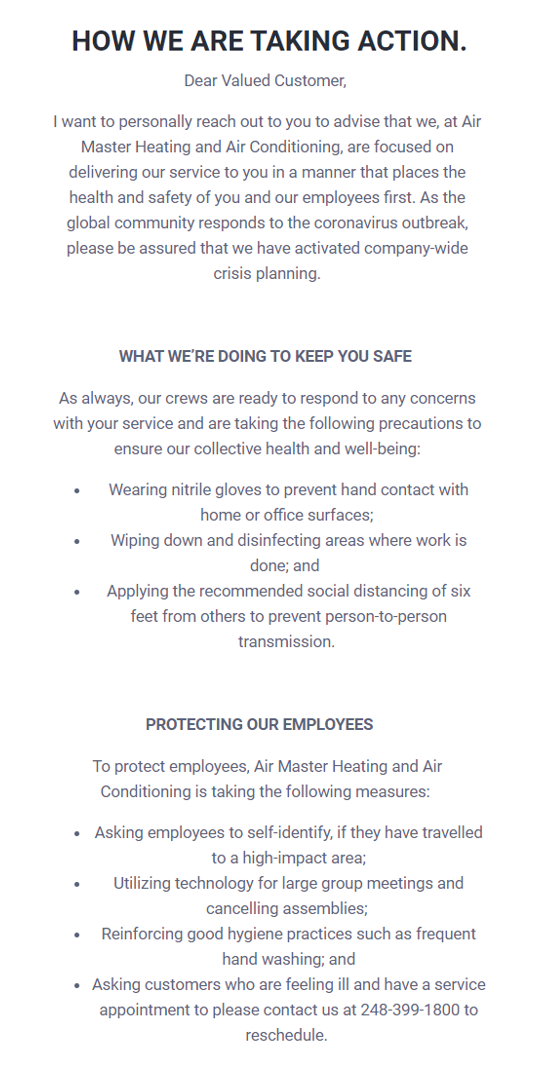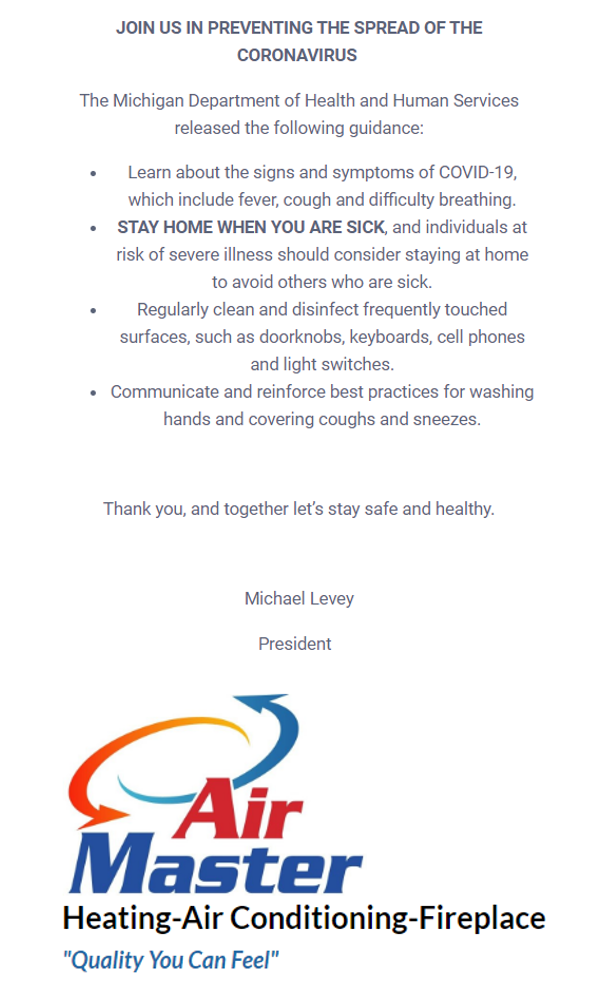If you run an in-person services business, you’re likely experiencing cancellations, or at the very least hesitation, from clients who are enacting social distancing practices during the COVID-19 pandemic.
But unless your city or state is under shelter in place orders for non-essential businesses, there are ways you can adapt your business to operate more safely during this crisis.
One HVAC business and Thryv user in Michigan worked fast to create and communicate their emergency response plan.
Here’s Air Master Heating & Air’s email communication about their process changes due to COVID-19:


What They Did Well
Air Masters did several things right in choosing how they’d adapt during the COVID-19 outbreak.
- They took a proactive, transparent approach to communicating.
- They were human and honest.
- And, they made it clear that they’ll only offer in-person services while protecting their team and clients’ health.
In-Person Services Business Pandemic Operations Tips
Business tips for operating in-person services during a pandemic:
- Protect your employees. Ask the sick to stay home.
- Use phone calls and virtual conferencing to update one another, instead of in-person meetings.
- Reinforce proper hygiene expectations.
- Protect your clients. Wear all personal protective equipment (PPE) you typically would, and take extra precaution to change it out as often as able. Add a mask to your PPE checklist if it wasn’t there prior.
- Wipe down any shared surfaces where your team works.
- Instruct them to communicate with clients about the social distancing norm of 6 feet, and have them stand that distance or further from clients if they must interact in person.
And in times of uncertainty, overcommunicate.
Communication tips for services business operating during a crisis:
- Send an update email regarding the steps you’re taking to operate safely.
- Update your website, social media accounts, and online listings with your most up-to-date offerings, hours and contact information.
- Have your team text or call clients before any appointments. Reiterate any “odd” or new ways you’ll do work, and confirm clients are comfortable with you continuing the project.
- Do as many things online as possible, using your own device. Send estimates virtually, have them approve over email, and take payments online as well. If you must touch shared surfaces, wipe them with disinfectant wipes promptly, then wash your hands.


